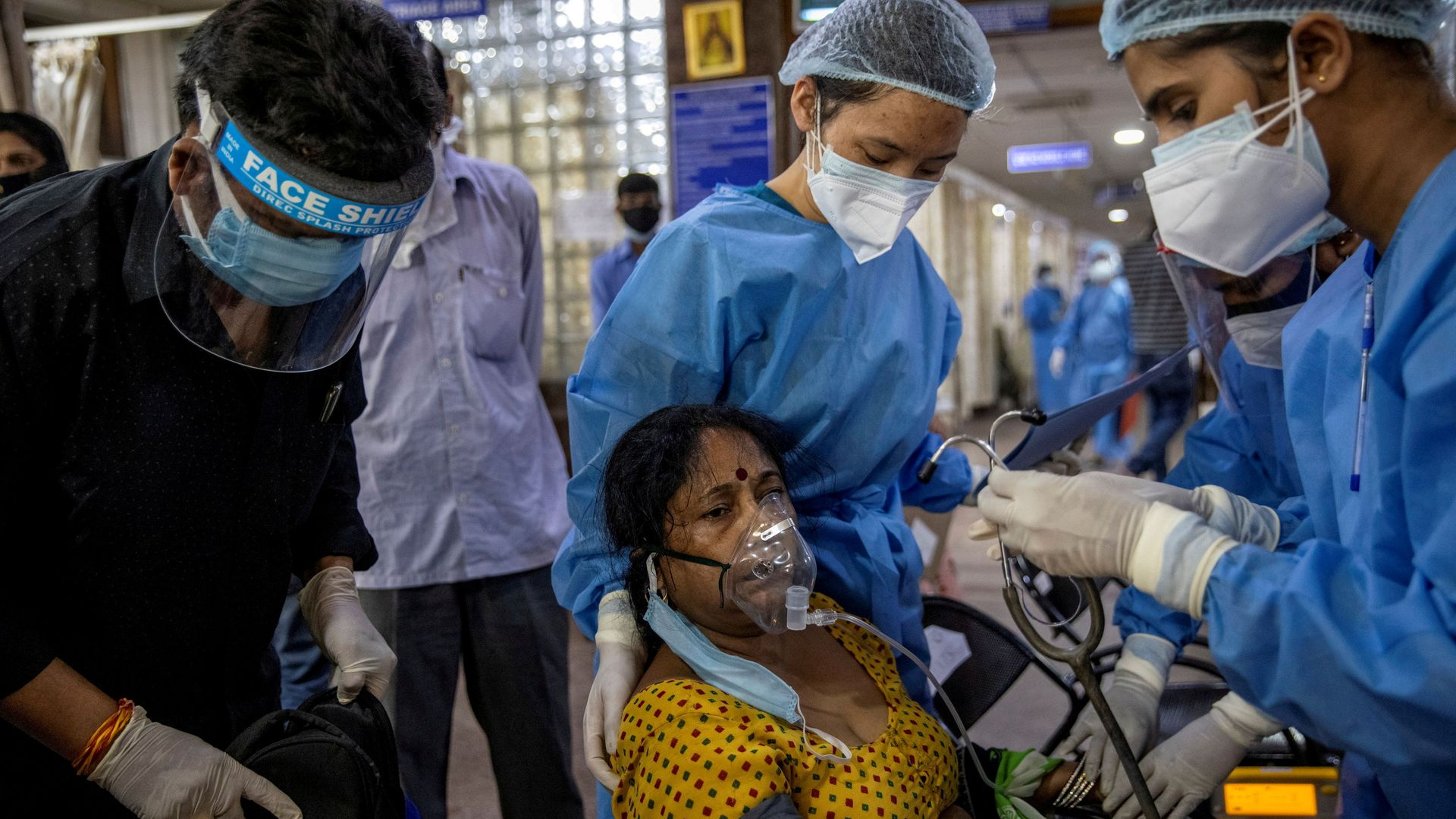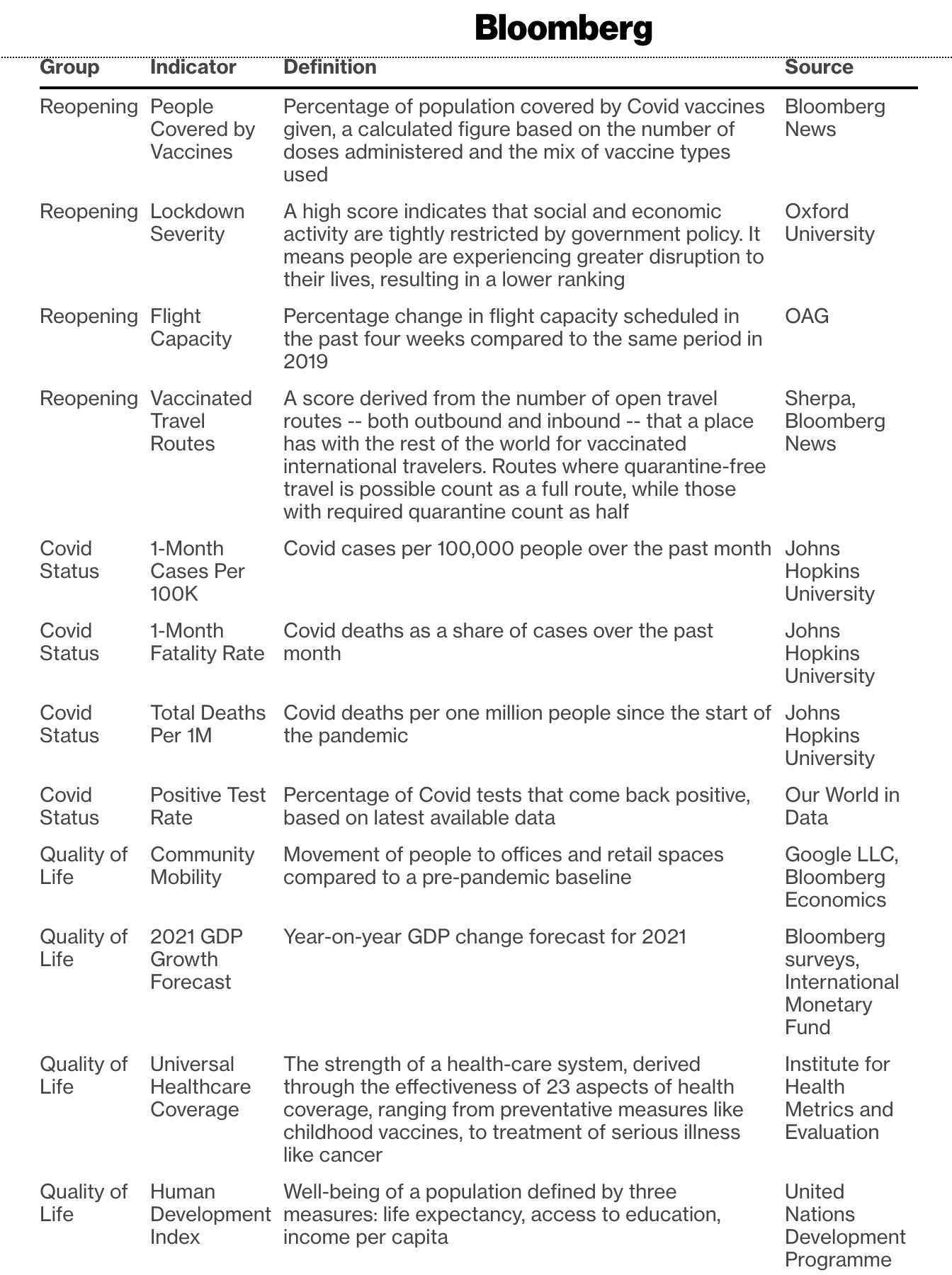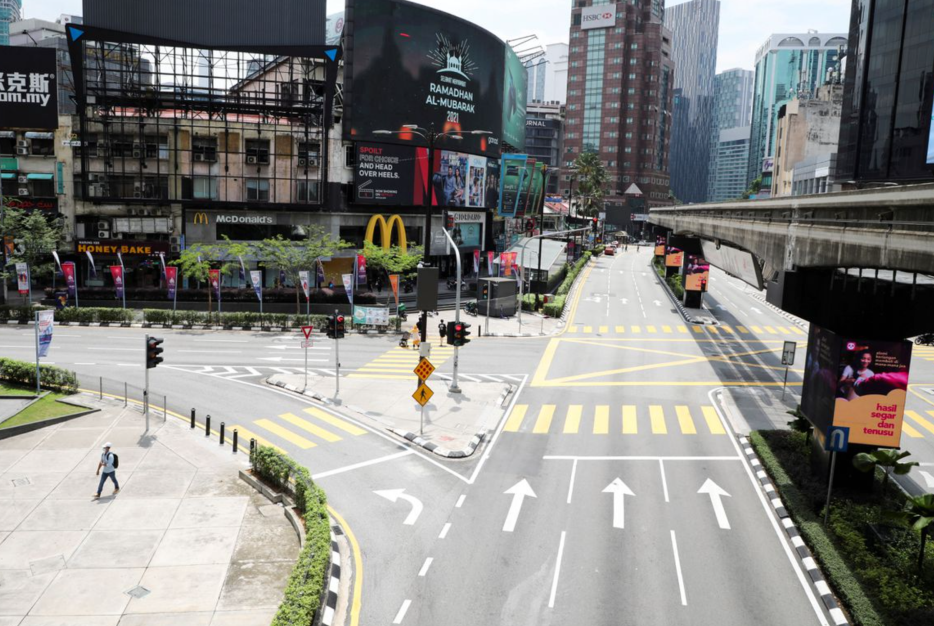The latest version of a Covid Resilience Ranking published by Bloomberg has drawn the ire of people across the world. The problematic attribute undermining the ranking is a relative lack of interest in both the human toll and governments' attempts to avoid it.
With indicators such as flight capacity and GDP growth forecast, the analysis signals an approach that reflects how the largest 53 economies balance the relationship between societal reopening and COVID-19 containment. In a presumably post-pandemic world, where normalization is the dominant subject, Bloomberg's report seems to stand out among other analyses that only focus on how successfully each place has contained the virus.

An emergency ward at Holy Family hospital in New Delhi, April 29. /Reuters
An emergency ward at Holy Family hospital in New Delhi, April 29. /Reuters
Twelve indicators are adopted to measure the COVID-19 resilience performance for each of the 53 chosen places.
It ranks the U.S., which has recorded the most COVID-19 deaths in the world, as number one. Meanwhile, Australia, the Chinese mainland and Japan, often praised for their decisive COVID-19 measures, are ranked seventh, eighth and 23rd respectively.
Negative sentiments around the findings are high. According to a Twitter analysis, the number of people expressing a negative view of Bloomberg's report is three times as many as those that agree with it.
Netizens are calling it a "laughing stock," as the COVID-19 calamities in some of the places at the top of the list are still a fresh memory. "Joke," "fake" and "shameless" are the most frequent words used by social media users to describe the ranking. What also seems to echo through them is the report's tendency to disregard human lives.
But putting aside the offense people take from the ranking, some flaws in its methodology raise questions over its adequacy.
First, the 12 given indicators seem rather scattered and purposeless. Bloomberg did not give a sound and convincing explanation for why the aggregation of these indicators reflect a place's overall COVID-19 resilience. Rather, it only explained the logic behind the introduction of each criterion.

A screenshot of Bloomberg's COVID Resilience Ranking indicators.
A screenshot of Bloomberg's COVID Resilience Ranking indicators.
The wholesale lack of reasoning makes Bloomberg's ranking look like a subjective, if not perfunctory, analysis, leaving it open the suspicion that the addition or omission of certain indicators can be easily manipulated by the designers.
The measurement of the individual indicators is questionable, too.
According to its methodology, the place performing the worst in an indicator scores zero and the best 100. Each place's overall performance score is the average of its scores in all 12 indicators. This inevitably raises the question of why a more authoritative method is lacking.
Peru is the only place where the number of deaths per 1 million people surpasses 2,900, standing at 5,806 – the worst under this measure. Meanwhile, the remaining 52 places are all rated beyond the median. This measurement is skewed. If Peru were taken out of the equation, the U.S. and over a dozen other places where the number exceeds 1,500 would get much poorer scores, if not the poorest. Hence, it begs the question of why a more equitable form of measurement, one that did not skew the numbers, was not found. Without a common baseline for all indicators, the combined figures will be similarly skewed and quite misleading.
That all 12 indicators are weighted equally and separately is another source of contention. Since how much a country should reopen its economy hinges on how safe it is to do so, it makes little sense to measure a place's performance in indicators, such as community mobility and GDP growth forecast, without first considering its handling of the pandemic.
In Bloomberg's model, even when a country or region suffers from skyrocketing infections, deaths and an acute vaccine deficiency, its high scores in other indicators can still lift its overall score. This metric simply plays down the importance of keeping a place safe from COVID-19. A more reasonable approach might have been to weigh reopening progress and quality of life status against vaccination progress, the number of positive cases and deaths.

A street during a lockdown due to the COVID-19 pandemic, in Kuala Lumpur, Malaysia, May 11, 2021. /Reuters
A street during a lockdown due to the COVID-19 pandemic, in Kuala Lumpur, Malaysia, May 11, 2021. /Reuters
The debate over whether lockdowns should be implemented at the expense of economic activity existed long since the pandemic ripped through the world. A prevailing consensus among most governments is that when COVID-19 is not contained, lockdowns should be kept in place to protect human lives, no matter how many other economies have reopened.
Still, one may argue that restricting movement is unnecessary as long as large-scale vaccination is being rolled out. And given that mass vaccination campaigns in developed economies have helped them minimize the dangers of COVID-19, a vaccination index is certainly a very important indicator of a government's resilience. But many developing economies are still struggling with the limited supply of vaccines they can offer, which hinders their desire to reopen if the virus is also not contained. Therefore vaccination should have been included in the COVID status and, like death and infection rates, carry more weight than other indicators.
By this logic, if a given country has a poor COVID status, meaning there is still a strong necessity for its authorities to maintain stringent health measures, its reopening progress and quality of life scores should be taken with a grain of salt.
Similarly, the analysis treating lockdown severity as a negative indicator invites doubt. In places where the vaccination rollout is barely making progress and the majority of the population is still very vulnerable to the virus, lockdowns are the better option, and rating these places poorly for the stringency of lockdowns defies logic, especially when the alternative could lead to severe illness and even lost lives. This is another reason each indicator should not be treated separately from COVID-19 and vaccination status.

